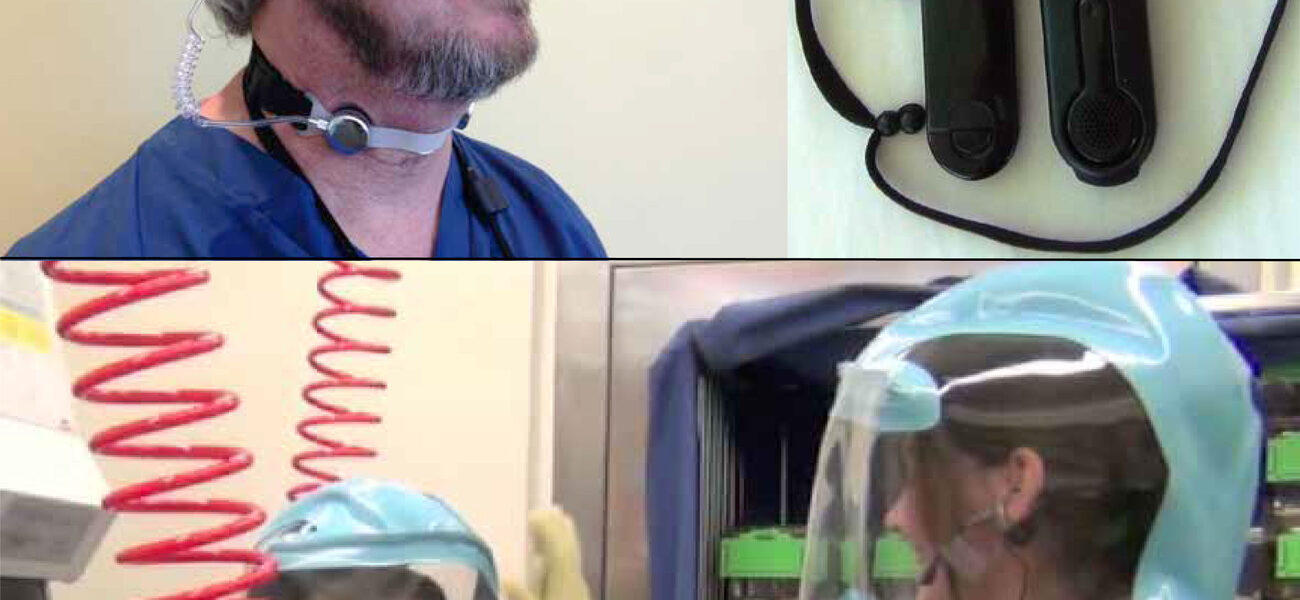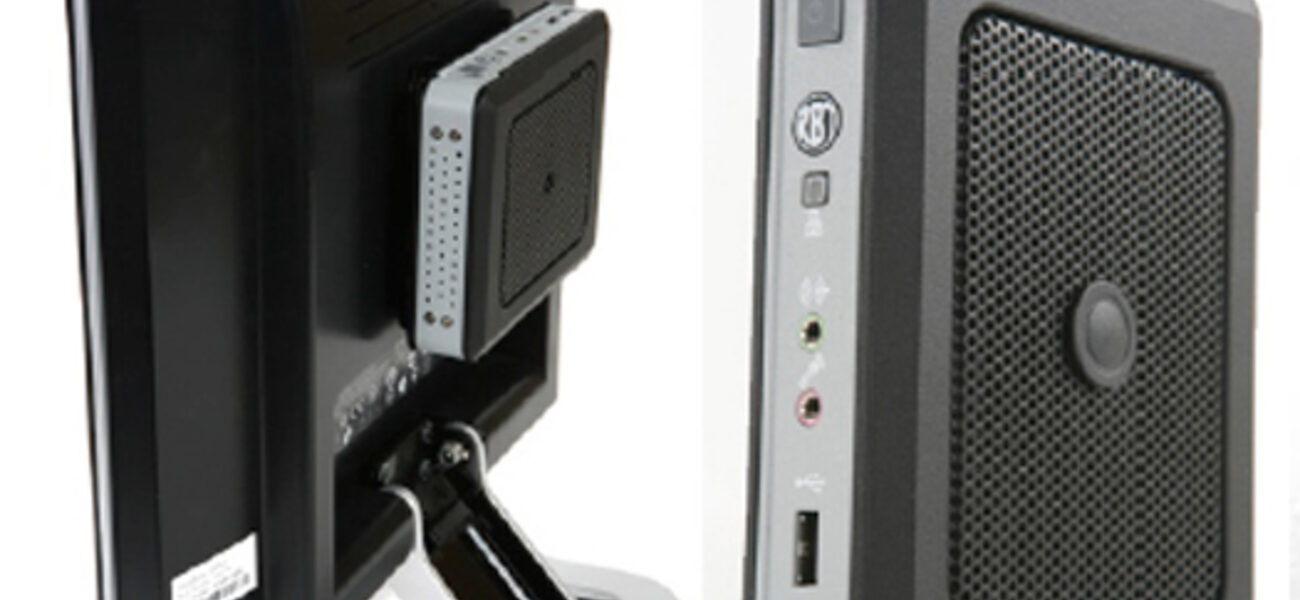The National Emerging Infectious Diseases Laboratories (NEIDL), on Boston University’s Medical Campus, is maximizing secure wireless networks and private cloud computing to improve safety, operational efficiency, and energy consumption. The seven-story building—which contains BSL-2, BSL-3, and BSL-4 facilities—features a dedicated data center, virtualized servers, extensive use of thin clients, and a secure wireless network providing voice-over-IP (VoIP) communications that cover more than 90 percent of the interior.
“One of the things I wanted to do when we were writing the grant and designing this building was to exploit VoIP technology as much as we could,” says John McCall, director for IT and telecommunications at the NEIDL.
The wireless VoIP system provides hands-free communication to researchers and maintenance personnel throughout the building. It connects individuals within teams or across departments using either smart phones, tablets, or a voice-activated badge that is worn inside containment suits or, in the case of facilities workers, outside their work shirts.
The facility’s wireless network and data center allow for a sophisticated computing environment using thin clients, virtualized servers, and tablets.
“Time is money and it adds up,” says McCall. “With the 300 or so people who will be working in this building, there can be a lot of time, effort, and costs spent on things like removing malicious software and viruses. So we came up with what we think are some unique solutions for resolving that. This includes using thin clients (for lab benches and offices) with tablets and smart phones instead of desktops and laptops.”
Hands-Free Communication
Both researchers and facility maintenance staff favor the VoIP hands-free communication system. The system works with smart phones or with a badge worn inside containment suits. The badge options for headsets include a throat microphone that is preferable in BSL-4 suits because the compressed air delivered to the inside of the suit creates a persistent background noise of 75 to 85 decibels.
“After some experimentation with different approaches we found that the throat microphones worked very well at eliminating the background noise inside the containment suits,” says McCall. “The newer suits are promised to be much quieter while having the options of a variable air pressure delivery system.”
In addition to allowing researchers normally isolated in biocontainment suits to communicate easily, it also allows researchers to call themselves and dictate messages during procedures.
“So if you are a scientist doing necropsy, you can do hands-free dictation of what is happening, and log out,” says McCall. “You can also have three-way conversations. If you are arranging an animal transfer from one end of the level four lab to the other end, and you want to talk to the aerobiologist who also wants to talk to their post-doc to help them out, all three of you can talk at the same time.”
Server software enables the creation of user groups, so if a researcher wants to talk to someone in animal science, they don’t need to know who is logged in. They can just initiate the call and with a voice prompt ask for animal science, and they will get the first person in line on the system.
“You can imagine the safety advantage of that feature if you want to notify EH&S because there is a spill,” says McCall. “Or you want to quickly call public safety, or facilities for any reason.”
The Science of VoIP
The VoIP system is exclusive to the NEIDL thanks to a series of wireless access points that are strategically spaced throughout the building. While 90 percent of the interior is covered, the signal ends at the building envelope, including the rooftop.
VoIP access points are individually tuned using a process known as heat mapping to determine the penetration of the broadcast signal. Each of the access points is adjusted via software to create an even blanket of coverage within the NEIDL and prevent any signal from going beyond the walls.
“We spaced the wireless access points at predesigned intervals,” says McCall. “They have to be relatively close together because voice-over-IP operates at about 25 to 28 percent below a normal wireless computing signal.”
According to McCall, the building’s mechanical spaces proved the most difficult to cover due to the dense and complex array of exposed piping materials that reduce signal strength.
“An impressive amount of equipment reaches from floor to ceiling in our two dedicated mechanical floors,” says McCall. “To overcome this, we increased the number of wireless access points in those rooms and located them in areas with fewer obstructions, near the common work areas.”
Thin Clients, Clouds, and Virtualization
Private clouds and virtual desktops are transforming IT support in facilities like the NEIDL by making it proactive instead of reactive. This model greatly minimizes support demands, eliminates the threat of malicious software from multiple users, and significantly reduces data center power needs.
“A thin client can be very nontechnical,” says McCall. “It is really just a compact computer that is a little bit smaller than a hardback book. They essentially act as a pass-through device for a large server that houses all of your software and storage space. So when you log into a machine, you always see your desktop, wherever you are. It doesn’t matter if you are in the lab or in your office, or on the other side of the globe at a conference.”
Most ports on the thin clients and tablets are unnecessary, so they are easy to seal for containment and to prevent connection of external peripherals, such as USB drives or other devices.
“We have run VHP decontamination on one of our BSL-4 rooms twice now,” says McCall. “I put almost every device I could find in there—including tablets, thin clients, and displays. So far they are all working fine, including the room’s wireless access point attached to the ceiling.”
Servers are loaded with RAM based on the needs of the end-user. High-powered users—such as genetic sequencing researchers or those doing whole-animal imaging—get large amounts of RAM, while less-intensive users have less. By virtualizing software applications within the private server cloud, NEIDL reduces power consumption and heat output of its data center.
“The cloud is just another name for multiple servers,” says McCall. “Virtualization is just another name for a fake server within a server. They are very easy to back up; very easy to reinstate. And they help reduce operating costs considerably.”
All systems associated with safety, security, and science in the NEIDL are redundant. This includes backup generators, air compressors, and filtration systems. Additionally, the critical hardware and software contained in the data center are mirrored for immediate recovery if necessary.
“We have redundant fiber coming in from Boston University, and we have a land-line-based telephone system that comes from the Boston Medical Center, which is an adjacent building there as well,” says McCall. “Lessons learned from Hurricane Sandy and East Coast labs that are completely VoIP for their telephone system justified our decision to offer land lines and VoIP for the NEIDL.”
Tablets, SOPs and E-Books
Another innovative feature of the NEIDL is the use of tablets for displaying training videos that demonstrate Standard Operating Procedures (SOPs), protocols, and other operational functions.
“We’re experimenting with installing 11-inch tablets in the labs with task-specific SOPs and protocols,” says McCall. “For example, we filmed an entire cage-change operation the way it should be done with two people handing off cages and placing them back into the rack. Then we shot what happens when you do it incorrectly, and edited it down. It is very effective for training.”
Maintenance and facilities personnel also use 11-inch tablets to access installation manuals that come with the equipment, as well as all the operational manuals that came with the building.
“We have a student feed pages from these massive manuals into a high speed scanner and convert them into e-books,” says McCall. “So a maintenance person can pull up the e-book on a tablet, type in a pressure valve identifier phrase, and get a quick hyperlink to an expandable image of it. They like that very much,”
According to McCall, another good idea is to film vendors when they come into the building to do installations or repairs.
“No one can remember everything afterwards,” he says. “Filming is a great way to document the details and you can get very good results from a $200 HD camera and inexpensive editing software.”
Audio/Video Communication
In addition to the hands-free communication system, the NEIDL also features an advanced notification system that informs occupants in specific rooms or zones of relevant information using audio/visual and text displays on flat-panel screens.
“If you’re in a suite of five different rooms, and there is an airflow situation or a chemical spill, we can send a message directly to that room as opposed to just having a light flash or an alarm go off,” says McCall. Using a combination of servers and triggers, we can make notifications much more specific.”
Small flat-panel touch-screens built into hallways outside vivarium spaces monitor animal conditions inside and allow users to enter basic animal care data. While the system works well, getting all of the desired functionality from the building automation system proved more challenging than originally expected.
“Unfortunately, our building automation system didn’t provide the kinds of triggers needed to feed the information we wanted into the panel—including room temperature, humidity, and airflow,” says McCall. “We also wanted it to be able to trigger the alarm system. We ended up going through a third-party software solution to get that done. But the point is, there are ways around these limitations if you just keeping hitting it with your head hard enough.”
By Johnathon Allen
This report is based on a presentation by John McCall at the Tradeline 2013 International Conference on Biocontainment Facilities.



